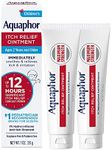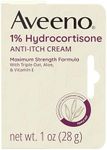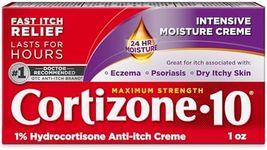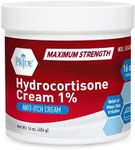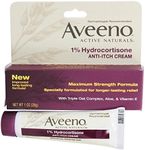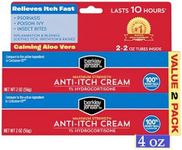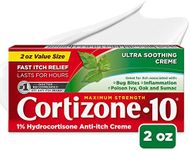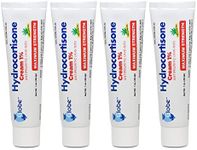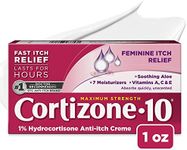Buying Guide for the Best Hydrocortisone Creams
Hydrocortisone creams are commonly used to treat a variety of skin conditions, such as eczema, psoriasis, and allergic reactions. When choosing a hydrocortisone cream, it's important to consider several key specifications to ensure you select the right product for your needs. Understanding these specifications will help you make an informed decision and achieve the best results for your skin condition.StrengthHydrocortisone creams come in different strengths, typically ranging from 0.5% to 2.5%. The strength indicates the concentration of the active ingredient, hydrocortisone, in the cream. A lower strength (0.5% to 1%) is usually sufficient for mild skin conditions and can be used on sensitive areas like the face. Higher strengths (1% to 2.5%) are more potent and are used for more severe conditions or on less sensitive areas of the body. It's important to choose the right strength based on the severity of your condition and the area of application. If you're unsure, it's always best to start with a lower strength and consult a healthcare professional if needed.
FormulationHydrocortisone creams can come in various formulations, such as ointments, lotions, gels, and creams. Creams are generally well-suited for most skin types and conditions, providing a good balance of moisture and absorption. Ointments are thicker and more occlusive, making them ideal for very dry or scaly skin. Lotions are lighter and can be easier to apply over large areas or hairy skin. Gels are often used for their quick absorption and are suitable for oily skin. Consider your skin type and the specific condition you're treating when choosing the formulation.
Additional IngredientsSome hydrocortisone creams contain additional ingredients that can provide extra benefits, such as moisturizers, aloe vera, or antifungal agents. Moisturizers can help soothe and hydrate dry skin, while aloe vera can provide a cooling effect and reduce inflammation. Antifungal agents can be useful if you have a fungal infection along with inflammation. Look for these additional ingredients if you have specific needs or preferences, but be mindful of potential allergens or irritants if you have sensitive skin.
Application FrequencyThe frequency of application can vary depending on the product and the severity of your condition. Some hydrocortisone creams are designed for once-daily use, while others may be applied two to four times a day. It's important to follow the recommended application frequency to avoid overuse, which can lead to side effects such as skin thinning or increased irritation. Consider your daily routine and how often you can realistically apply the cream when choosing a product.
Duration of UseHydrocortisone creams are generally intended for short-term use, typically no longer than one to two weeks. Prolonged use can lead to side effects and decreased effectiveness. If your condition does not improve within the recommended duration, it's important to consult a healthcare professional for further evaluation and guidance. Choose a product that clearly states the recommended duration of use and be mindful of adhering to these guidelines.


